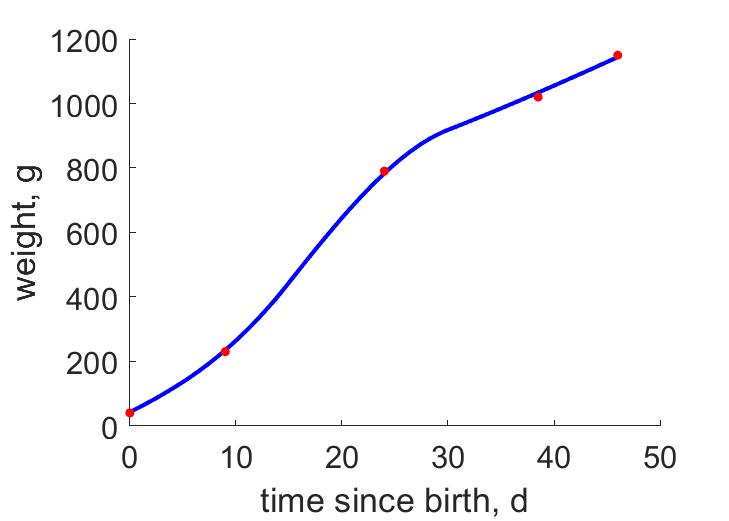Predictions & Data for this entry
| Model: std | climate: Cfa, Cfb | migrate: | phylum: |
| COMPLETE = 2.4 | ecozone: TA | food: biCi, biCv | class: |
| MRE = 0.012 | habitat: 0iTh, 0iTi, 0iTf | gender: Dg | order: |
| SMSE = 0.000 | embryo: Tnwf | reprod: O | family: |
Zero-variate data
| Data | Observed | Predicted | (RE) | Unit | Description | Reference |
|---|---|---|---|---|---|---|
| ab | 36 | 38.05 | (0.05695) | d | age at birth | avibase |
| tx | 60 | 59.89 | (0.001839) | d | time since birth at fledging | avibase |
| tp | 180 | 177.6 | (0.01315) | d | time since birth at puberty | guess |
| tR | 365 | 365 | ( 0) | d | time since birth at 1st brood | guess |
| am | 2226 | 2228 | (0.0005365) | d | life span | AnAge |
| Ww0 | 56.5 | 55.16 | (0.02367) | g | initial wet weight | avibase |
| Wwb | 43 | 42.73 | (0.006279) | g | wet weight at birth | guess |
| Wwi | 1252 | 1271 | (0.01469) | g | ultimate wet weight for females | avibase |
| Wwim | 1447 | 1449 | (0.001384) | g | ultimate wet weight for males | avibase |
| Ri | 0.005479 | 0.005444 | (0.006548) | #/d | maximum reprod rate | avibase |
Uni- and bivariate data
| Data | Figure | Independent variable | Dependent variable | (RE) | Reference |
|---|---|---|---|---|---|
| tW |  | time since birth | weight | (0.01069) | OlseMark2020 |
Pseudo-data at Tref = 20°C
| Data | Generalised animal | Ninox strenua | Unit | Description |
|---|---|---|---|---|
| v | 0.02 | 0.02758 | cm/d | energy conductance |
| p_M | 18 | 361.2 | J/d.cm^3 | vol-spec som maint |
| k_J | 0.002 | 0.01487 | 1/d | maturity maint rate coefficient |
| k | 0.3 | 0.3013 | - | maintenance ratio |
| kap | 0.8 | 0.971 | - | allocation fraction to soma |
| kap_G | 0.8 | 0.8002 | - | growth efficiency |
| kap_R | 0.95 | 0.95 | - | reproduction efficiency |
Discussion
- males are assumed to differ from females by {p_Am} only
- Body temperature is guessed
- mod_1: Pseudo-data point k is used, rather than k_J; Data set tp and parameter t_R are added, the latter replacing clutch interval t_N. Postnatal T is based on PrinPres1991, see get_T_Aves. See further the revision page, theme puberty
Bibliography